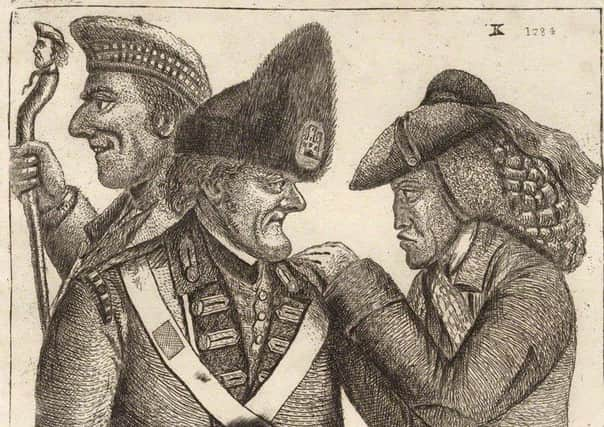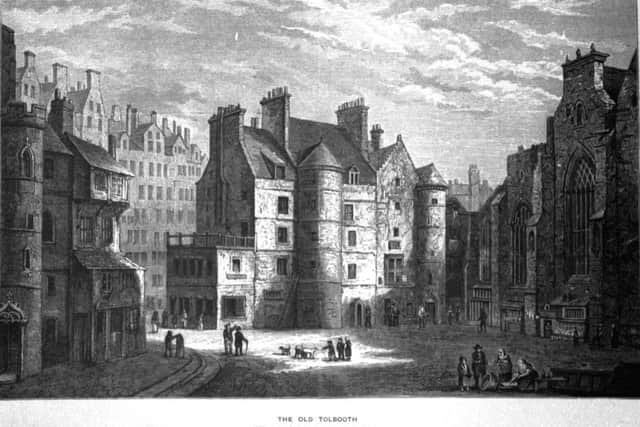James Robertson: The daft Highland Laird who loved jail


So it was for James Robertson a.k.a. “The Daft Highland Laird”, who – upon being incarcerated in 1745 – discovered that he thoroughly enjoyed being locked in a cell.
After his release, he did most everything he could to be sent back to prison. His attempts usually were ignored, and he even was once tricked into leaving prison by jailers who claimed they were bringing him to court so he could face more serious punishment.
He really, really liked the prospect of serious punishment.
Advertisement
Hide AdAdvertisement
Hide Ad

Like quite a few masochists, Robertson came from a patrician background. For his staunch support of the Jacobite cause, he was thrown into the Old Tolbooth prison of Edinburgh.
While in Old Tolbooth, his mental condition began to deteriorate. Upon his discharge from prison, his younger brother was appointed as his guardian and took over a sizable estate. Robertson, the ex-prisoner, was given a yearly allowance.
Spared from the struggle for bread, “he was enabled to maintain the character of a deranged gentleman with some degree of respectability”, according to the 1895 book “Kay’s Edinburgh Portraits”.
In a sense, Robertson’s life should have been relatively carefree. But it wasn’t. His soul was in turmoil. Gnawing at him constantly was the urge to be incarcerated once more. He also yearned to be hanged, and then drawn-and-quartered for his Jacobite politics.


He tried to get sent to jail for shouting treasonous statements. When these efforts failed, he ceased to pay his rent. For this dereliction, his landlady had him thrown into debtors’ prison.
Confined in a cell once again, Robertson was just starting to enjoy himself when that debt to his landlady was paid (presumably by his brother and legal guardian).
When prison officers came to release Robertson, he grew agitated and demanded to be arrested and punished for high treason. To avoid a violent struggle, the inmate was allowed to remain in his cell, while the authorities devised a plan.
Advertisement
Hide AdAdvertisement
Hide AdOne morning, two soldiers appeared at Robertson’s cell and told him that they were dispatched to escort him to the High Court of Justiciary, where a panel of judges was eager to try him for high treason.
Described as “overjoyed” with this news, Robertson gladly left his cell and accompanied the soldiers downstairs and out the prison door, at which point the door was slammed behind him.
It seemed this slamming of the door communicated the harsh truth to Robertson: no one in this uncaring world was willing to give him the gratification he sought.
Instead of submitting to despair, Robertson found a new preoccupation in woodcarving. He began carving wooden heads of public figures and affixed his creations to a walking-stick that he proudly displayed during his strolls through the Grassmarket.
An 1851 book published by the Great Exhibition in London describes Robertson – who had “some talent” and a “wayward imagination” – as producing “some of the most remarkable instances” of carved sticks.
During his later years, Robertson became known as an agreeable, if somewhat unconventional, personality. He shared his tobacco with adults and gave wooden tops (which he designed) to children. In this innocuous way, the man dubbed as “The Daft Highland Laird” spent his days until his death in July 1790.
The earlier Robertson had fancied himself a Jacobite rebel. One also might say that he was a rebel against expected patterns of human behaviour.
Advertisement
Hide AdAdvertisement
Hide AdThe spectrum of desire is wide and varied. But it is rare to encounter someone who so ardently wished to be imprisoned and disemboweled. For the uniqueness and intensity of his desires, Robertson deserves a sort of immortality.
Ray Cavanaugh enjoys short novels, long walks, and strange characters.
He wrote an epistolary novel involving a prisoner every bit as erratic as The Daft Highland Laird. This book, published in 2009 by ENC Press, can be found at: http://www.encpress.com/DMU.html